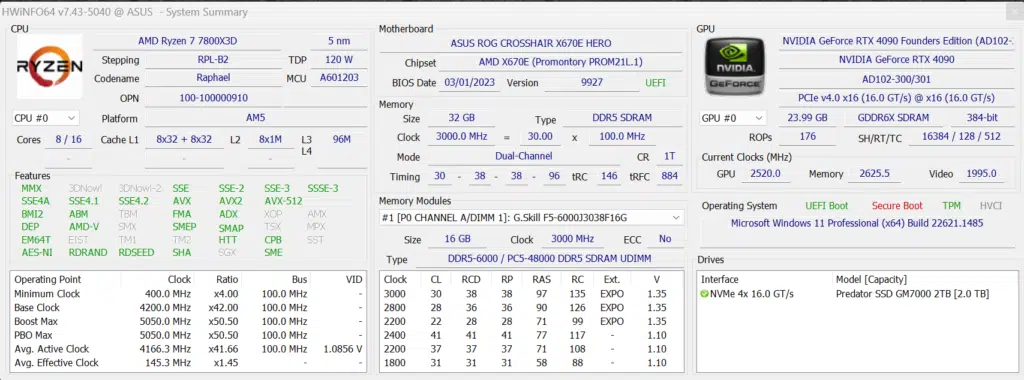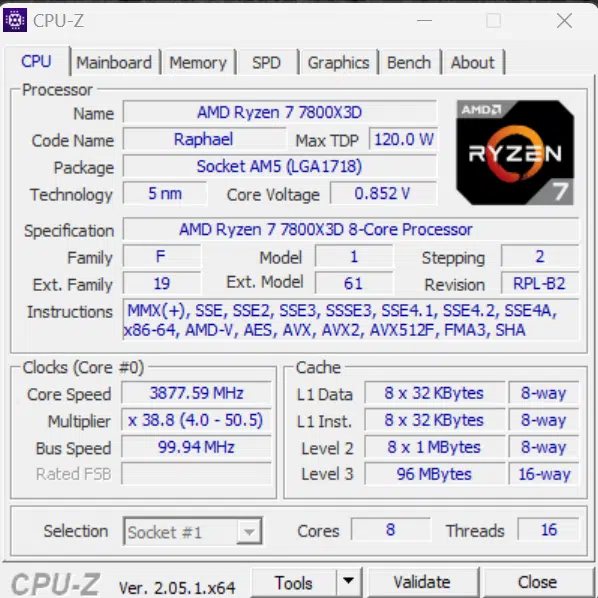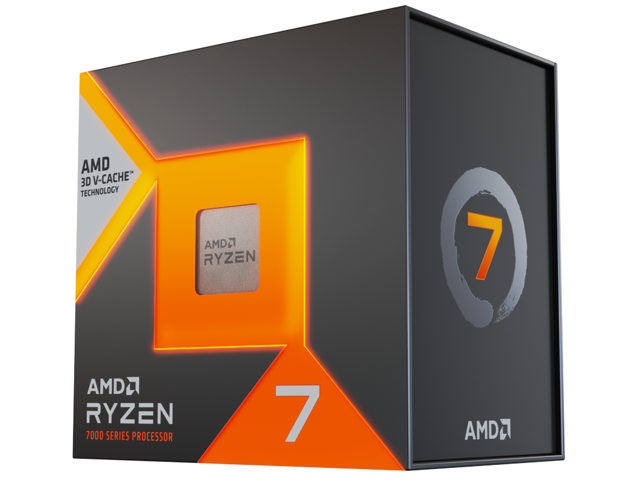
Introduction
The CPU we’ve all been waiting for is finally here, AMD Ryzen 7 7800X3D with all its 3D V-Cache on its single-CCD, is on our test bench today for some CPU game performance testing. In today’s CPU review, we put the AMD Ryzen 7 7800X3D through its paces reviewing game performance across 1080p, 1440p, and 4K, all tested. We leave no stone unturned by testing this new gaming-focused CPU by testing across the board in all three resolutions so that we get the big picture on performance and let you decide what your target gameplay performance and resolution are.
If you are not familiar with AMD 3D V-Cache and its Ryzen 7000X3D CPUs, you can check out our AMD Ryzen 7000X3D Architecture Preview. On February 27th, 2023 we reviewed the Ryzen 9 7950X3D in gaming performance. This was the first of AMD’s new 3D V-Cache CPUs to release, along with the Ryzen 9 7900X3D. Those CPUs are unique because they both have two CCDs but the AMD 3D V-Cache only resides on one of those CCDs. That means when gaming if a game utilized more than the total cores on that CCD with 3D V-Cache, it would slow down performance as you overflow past that CCD. In addition, it causes complications because AMD must rely on the Windows schedular, plus extra drivers and reliance on the Windows game bar, to park the CCD without 3D V-Cache and to schedule games on the right CCD with the 3D V-Cache. When it works, it’s great, but the problem is it may not always work just right.
Well, the AMD Ryzen 7 7800X3D fixes all of those complications and issues because it only has a single CCD (with 8 cores), and this CCD has all the 3D V-Cache. This means no worry about parking cores, no worry about overflowing CCDs slowing down performance, no extra drivers (beyond the chipset drivers) or provisioning needed, and no reliance on the Windows game bar. This is the solution gamers have been waiting for, and we cannot wait to see how this CPU performs in games. Want to make sure all your games always run with 3D V-Cache with no fuss? This is it.
AMD Ryzen 7 7800X3D
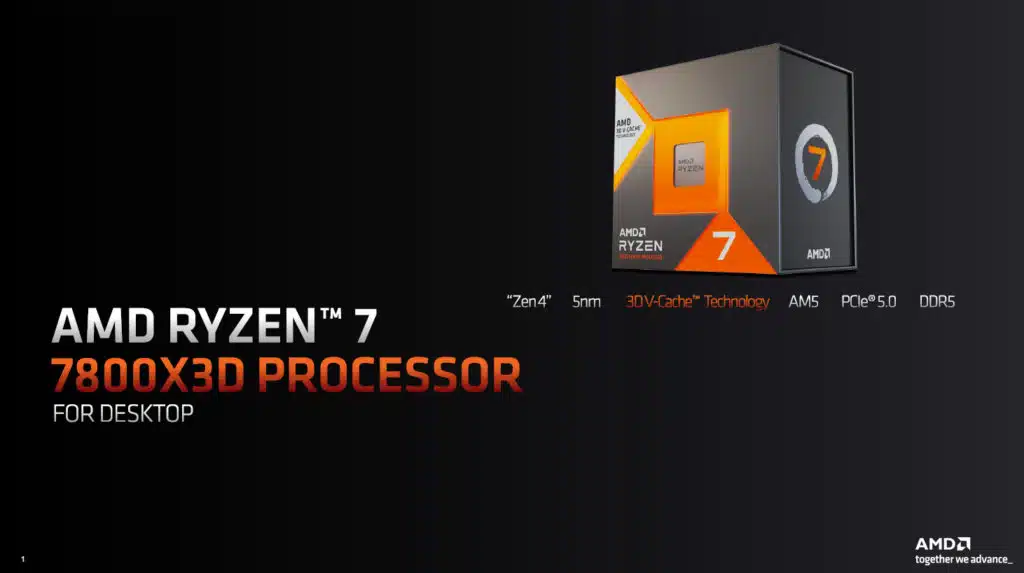
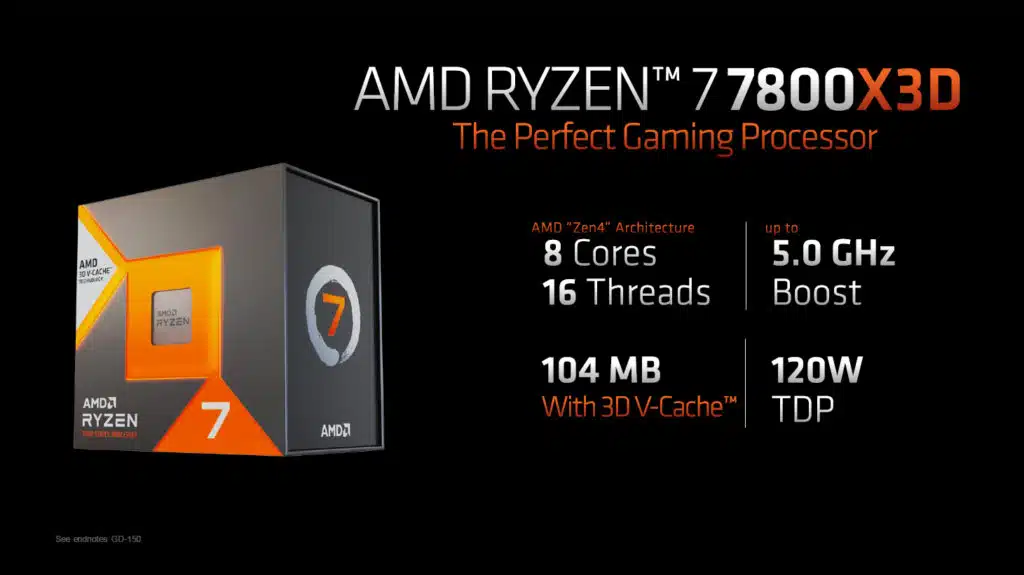
The AMD Ryzen 7 7800X3D would naturally be the upgrade from the last generation’s Ryzen 7 5800X3D, which started this whole trend. The Ryzen 7 5800X3D was unique because it was the first CPU from AMD to utilize 3D V-Cache by putting a large 96MB of L3 cache atop its CCD. This brought the total cache up to 100MB on the Ryzen 7 5800X3D (96MB L3 + 4MB L2). The one issue that was criticized with the Ryzen 7 5800X3D was, however, a lowering of its turbo clock speed to 4.5GHz versus the Ryzen 7 5800X which had a turbo clock of 4.7GHz. This reduction in clock speed did cause it to run slower in applications, but it absolutely killed it in gaming performance.
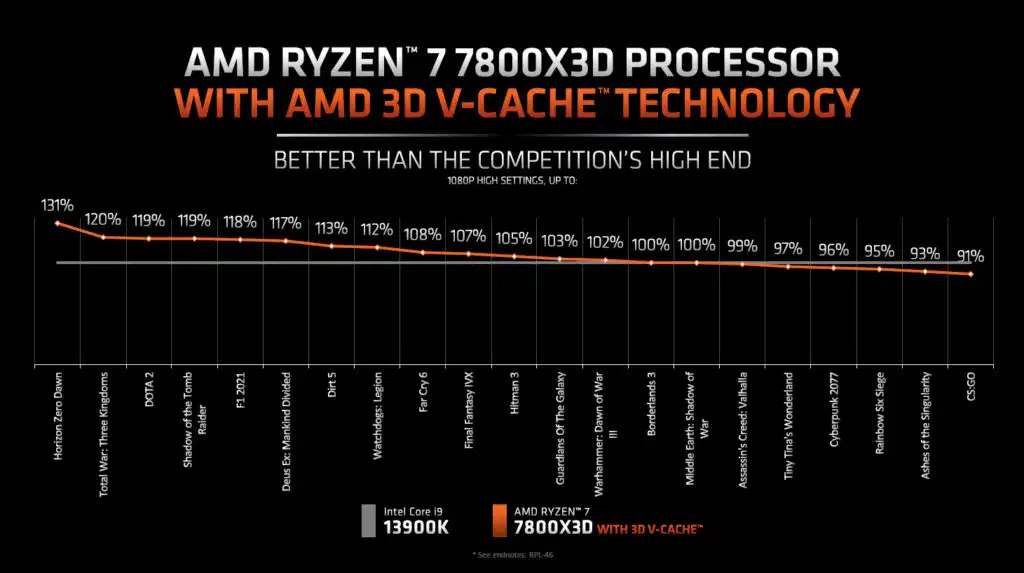
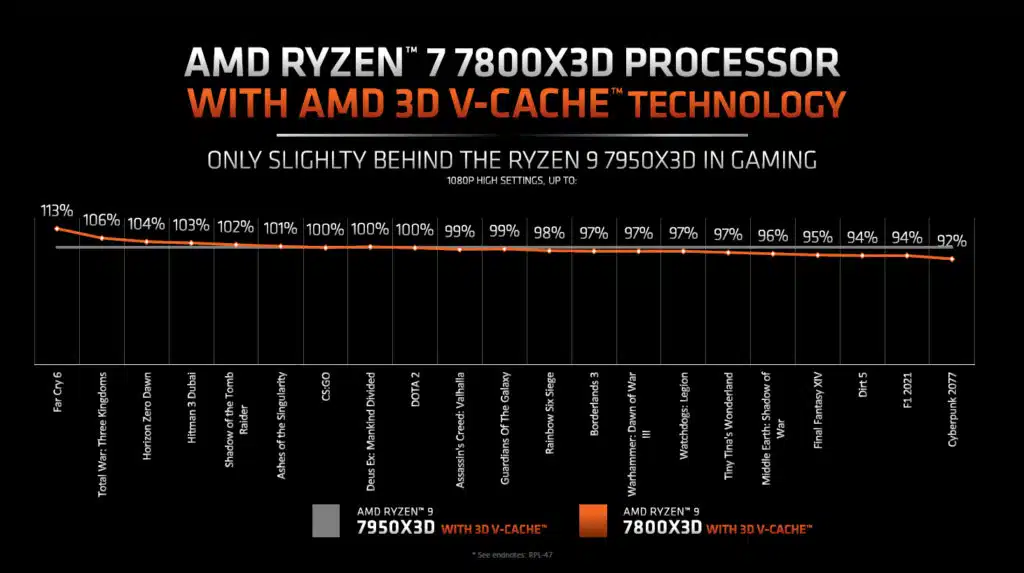
Well, with the new Zen 4 architecture, AMD played the tune a little differently. Instead of launching a “Ryzen 7 7800X” AMD instead launched a Ryzen 7 7700X so that it could later come out with a Ryzen 7 7800X3D with different clock speeds. Now, the caveat is that once again, the base clock and turbo clock are lower on the Ryzen 7 7800X3D compared to the Ryzen 7 7700X. However, the TDP is higher on the 7800X3D, and of course, it has a massive amount of L3 cache versus the Ryzen 7 7700X.
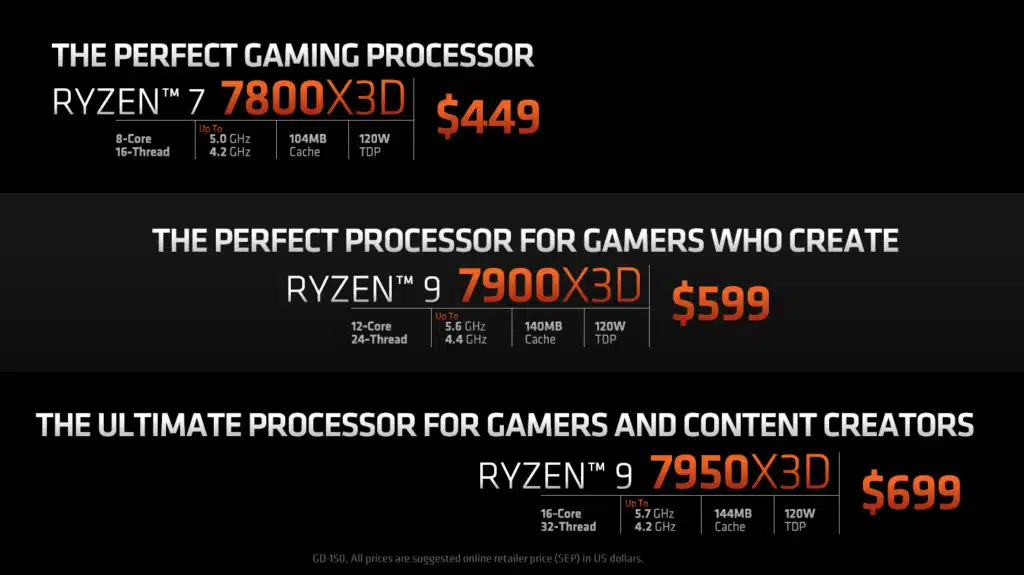
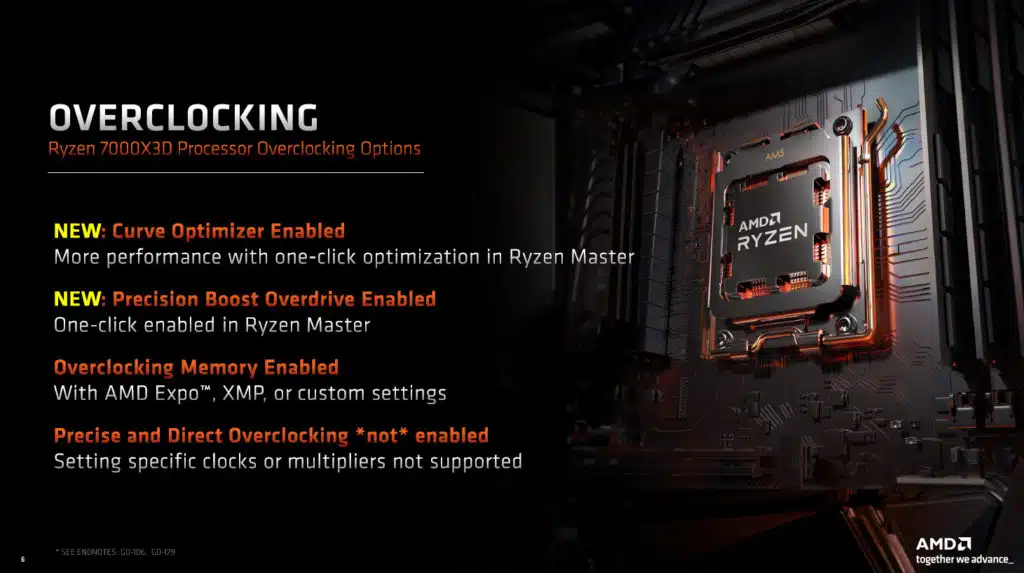
The Ryzen 7 7800X3D will have 96MB of L3 cache atop its CCD, plus 8MB of L2 cache, making for a total of 104MB of cache. Therefore, it has the same capacity of L3 cache as the Ryzen 7 5800X3D, but because the Zen 4 architecture has double the L2 cache it has more L2 cache and more total cache compared to the Ryzen 7 5800X3D. Compared to the Ryzen 7 7700X the Ryzen 7 7700X has 32MB of L3 cache and 8MB of L2 making for a total of 40MB. Therefore, the Ryzen 7 7800X3D has 64MB more L3 cache than the Ryzen 7 7700X.
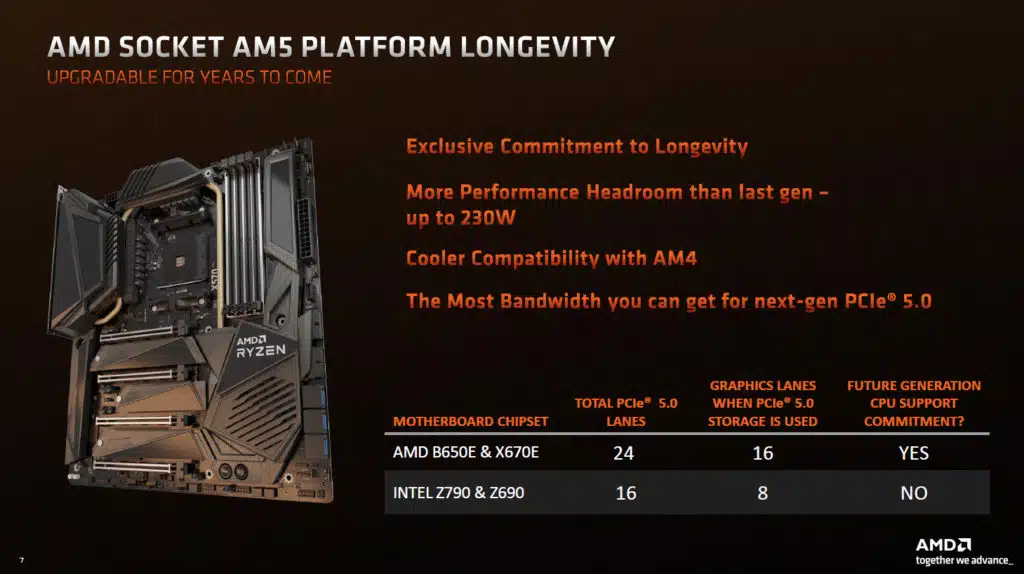
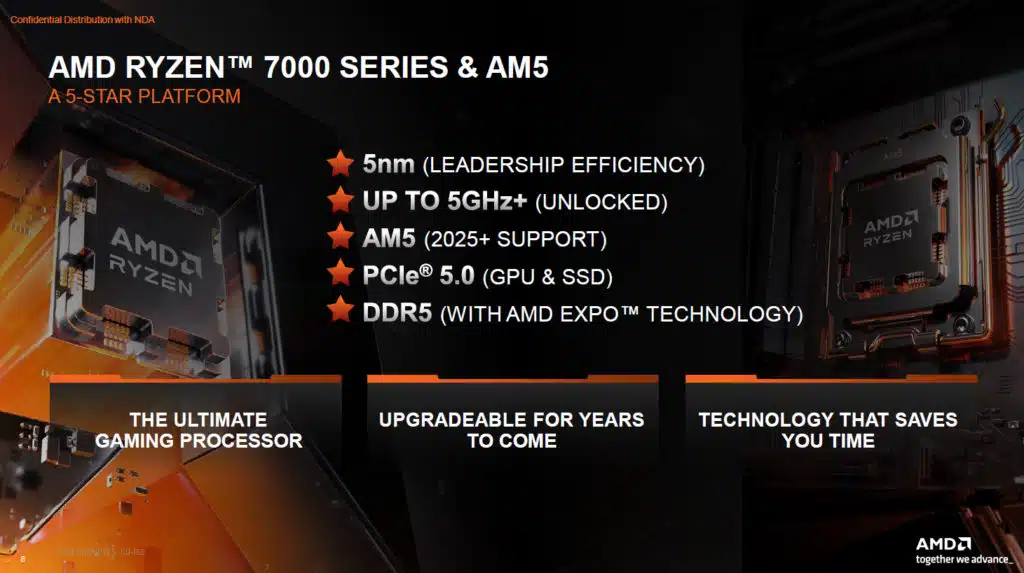
As we mentioned, the clock speeds are perhaps the weakness of the Ryzen 7 7800X3D versus the Ryzen 7 7700X, and this time they are more severe than the difference between the 5800X3D and 5800X. The Ryzen 7 7800X3D has a base clock of 4.2GHz and a turbo clock of 5.0GHz. The Ryzen 7 7700X has a base clock of 4.5GHz and a turbo clock of 5.4GHz. Therefore, the Ryzen 7 7800X3D’s turbo clock is a whole 400MHz lower than the Ryzen 7 7700X. For comparison, the difference between the 5800X3D and 5800X was 200MHz. This is despite the fact that the TDP is actually higher on the Ryzen 7 7800X3D at 120W versus the Ryzen 7 7700X at 105W.
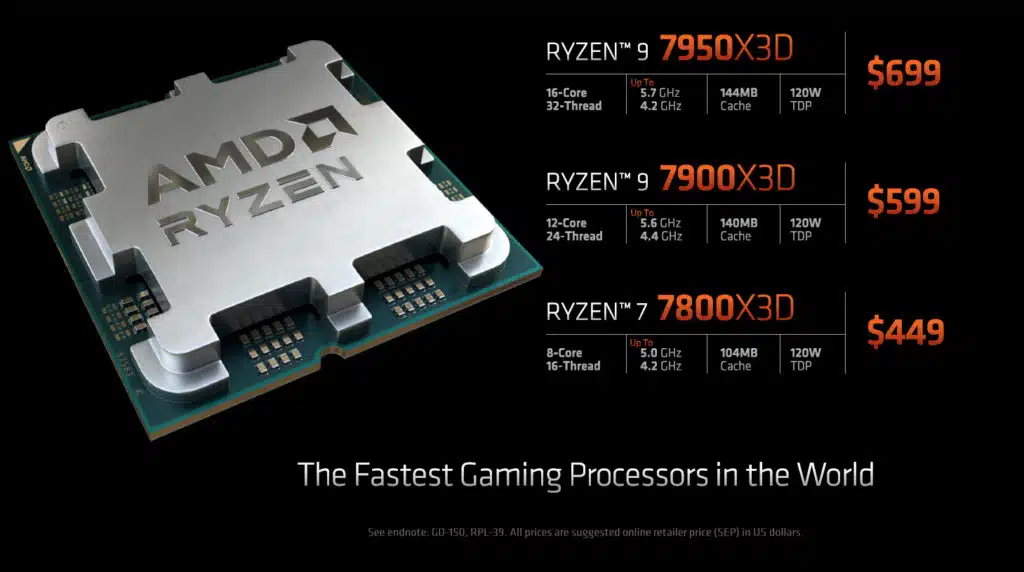
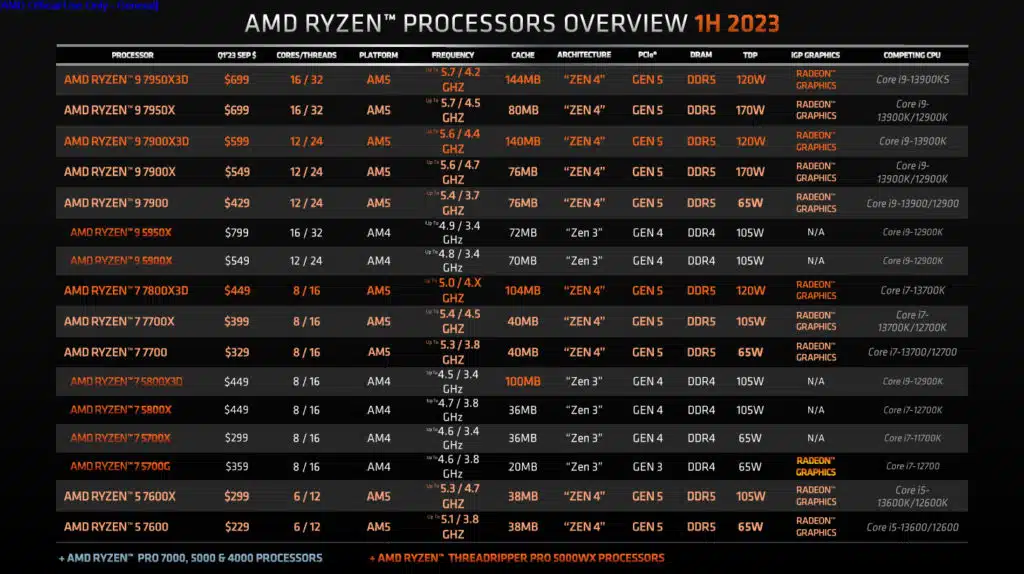
| Ryzen 7 7800X3D | Ryzen 7 7700X | Ryzen 7 5800X3D | |
|---|---|---|---|
| Architecture | Zen 4 | Zen 4 | Zen 3 |
| Cores/Threads | 8/16 | 8/16 | 8/16 |
| L3 Cache | 96MB | 32MB | 96MB |
| Total Cache | 104MB | 40MB | 100MB |
| Base Clock | 4.2GHz | 4.5GHz | 3.4GHz |
| Turbo Clock | 5.0GHz | 5.4GHz | 4.5GHz |
| TDP | 120W | 105W | 105W |
| MSRP | $449 | $399 | $449 |
The good part is that the Ryzen 7 7800X3D is $449, which is the same MSRP the Ryzen 7 5800X3D launched with as well. This is $50 more than the Ryzen 7 7700X which has an MSRP of $399.
AMD Ryzen 7 7800X3D Pictures

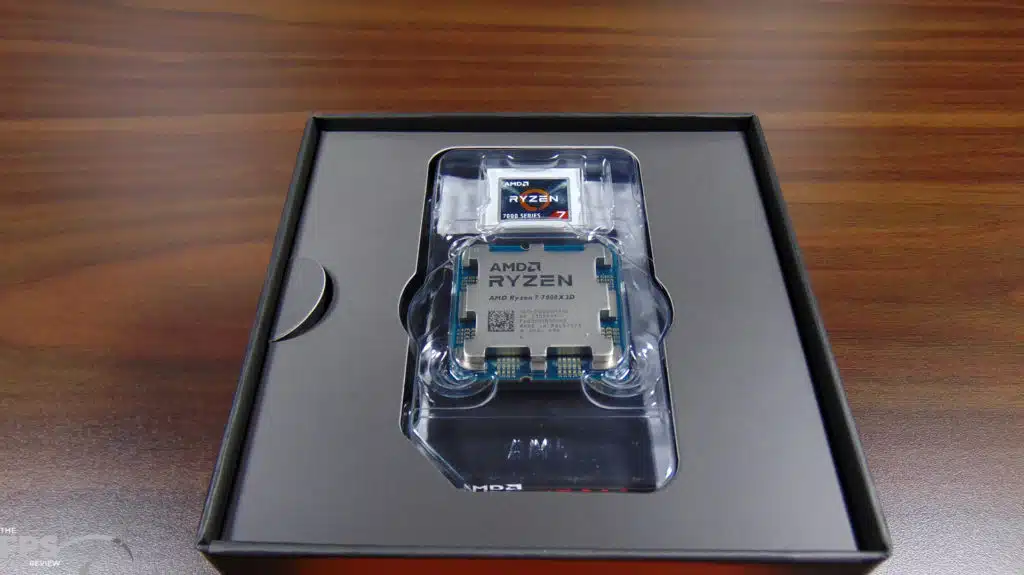
The AMD Ryzen 7 7800X3D comes packaged in the familiar AMD box, with AMD 3D V-Cache printed on the front to let you know what makes it unique. Inside, you will find the CPU packaged nicely with a sticker and booklet.
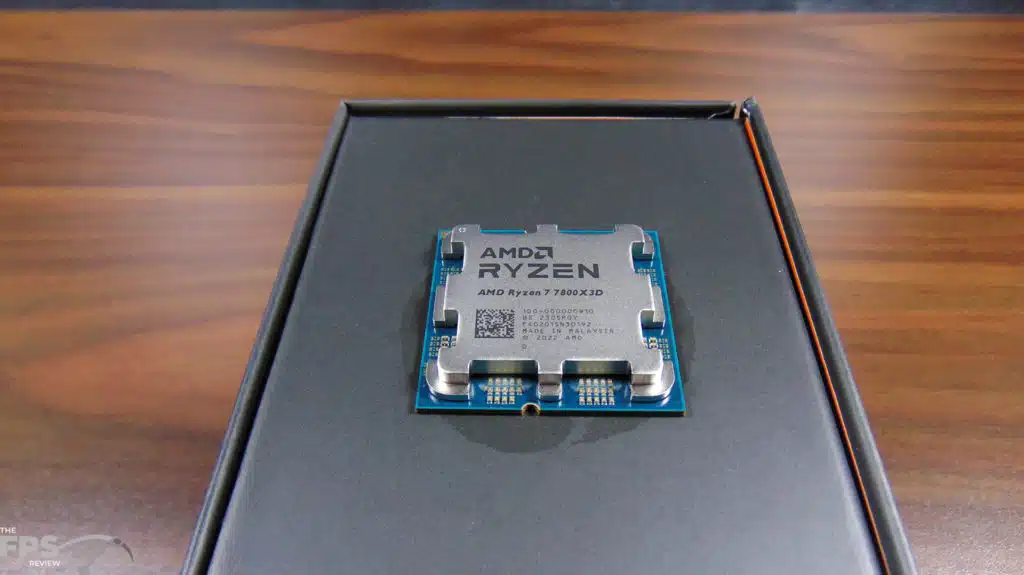
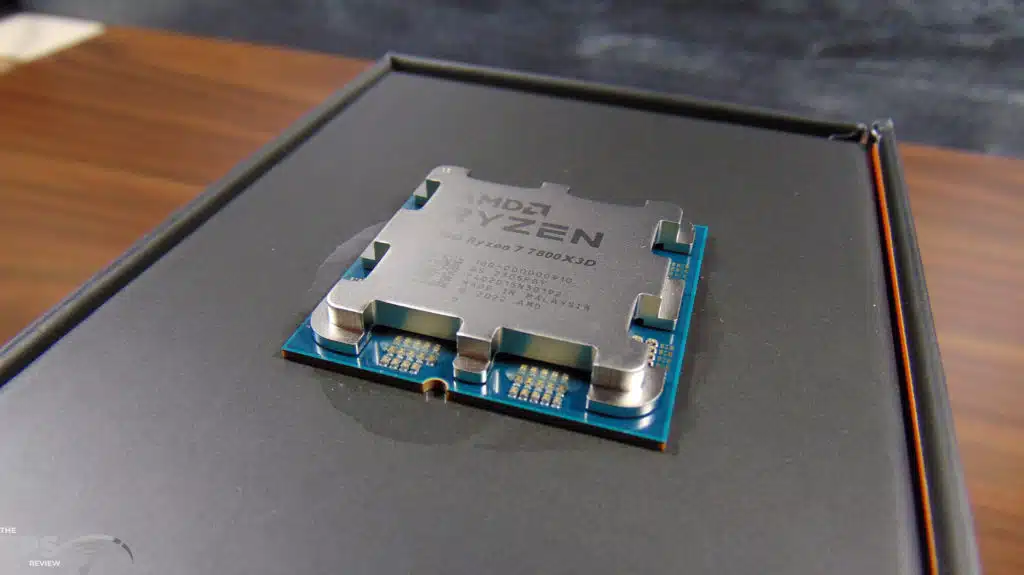
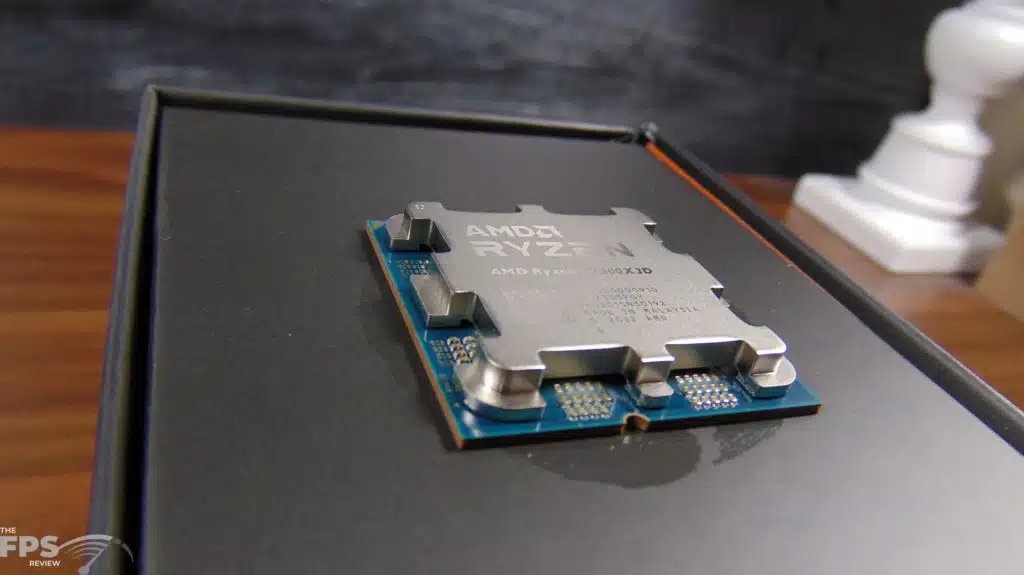
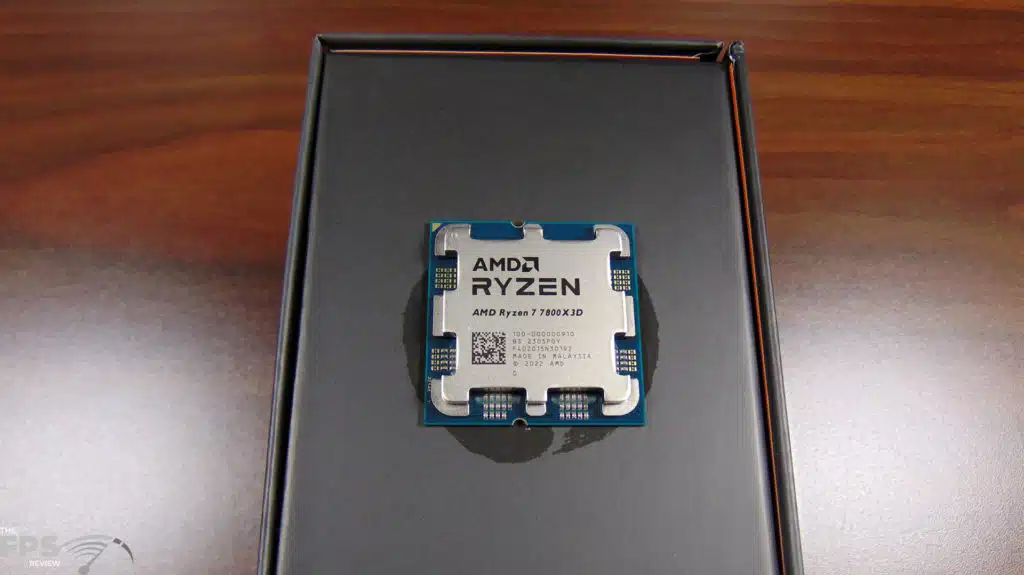
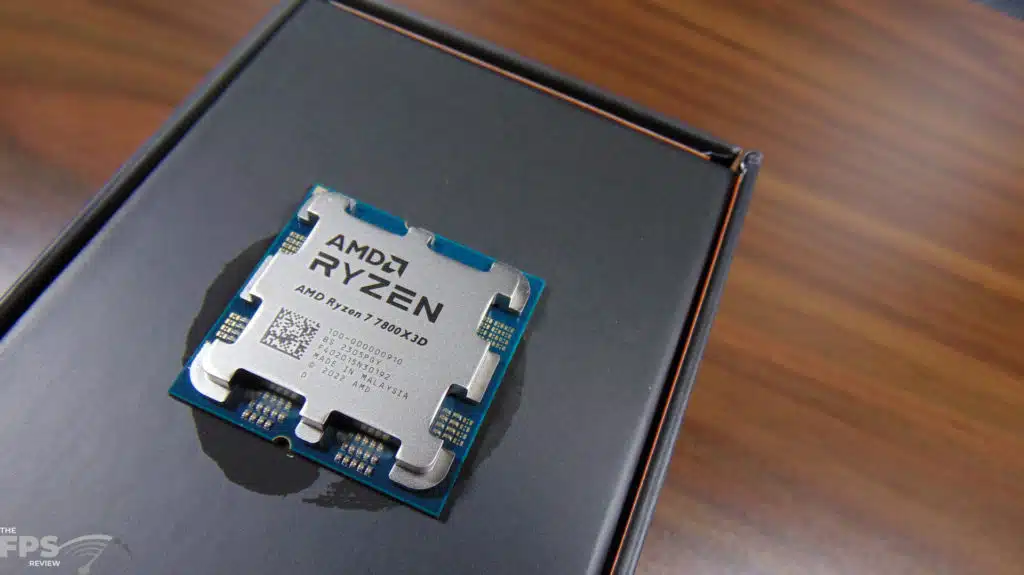
The AMD Ryzen 7 7800X3D Zen 4 Raphael AM5 CPU looks like all other AM5 CPUs from AMD. Other than the lettering, the layout, and physical appearance is the same. What makes this CPU unique lies underneath. Installation is like any other AM5 CPU, it went smoothly for us, fit right in the LGA1718 socket, and mounted well with our AIO.
